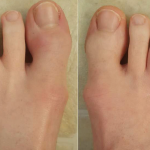WASHINGTON, D.C.—As of November 2024, there are 16 biologic disease-modifying anti-rheumatic drugs (bDMARDs) that are FDA approved for the treatment of psoriatic arthritis (PsA). Incredible news, right? But as my fellowship program director used to say, “There’s no free lunch.” This buffet of options is excellent for our patients, but poses challenges to the practicing rheumatologist when it comes to treatment selection.

Ana-Maria Orbai, MD, MHS
In the ACR Convergence 2024 Review Course, Ana-Maria Orbai, MD, MHS, director, Psoriatic Arthritis Program, and associate professor of medicine, Division of Rheumatology, Johns Hopkins University School of Medicine, Baltimore, provided a practical framework for choosing drugs for our patients with PsA. Treatment recommendations were based on the most recent EULAR and Group for Research and Assessment of Psoriasis and PsA (GRAPPA) guidelines. These guidelines overlap in most places, but do differ slightly in others.1,2
Treatment Choice Depends on PsA Domains
As with most diseases we manage as rheumatologists, PsA looks different for every person who has it. Clinical heterogeneity is the norm, and different patients respond better to some drugs than others. Therefore, thinking about PsA treatment through the lens of domains—that is, specific manifestations of disease—allows us to better tailor therapy selection. The domains of PsA include:
1. Axial PsA. Axial inflammation in PsA differs from that of axial spondyloarthritis (SpA). Prevalence increases with disease duration, and sacroiliitis tends to be asymmetric. What’s more, HLA-B27 positivity, inflammatory back pain and syndesmophytes are less common in axial PsA than in axial SpA.3
Dr. Orbai noted, “It’s important to determine if patients have this because [axial inflammation] will reduce our treatment options to tumor necrosis factor inhibitors (TNFi), Janus kinase inhibitors (JAKi), and interleukin-17 inhibitors (IL-17i).” IL-12/23i and IL-23i are notably missing from this list, although studies are ongoing for IL-23i in axial PsA.
EULAR and GRAPPA guidelines recommend four weeks of non-steroidal anti-inflammatory drugs (NSAIDs) and physical therapy, with escalation to bDMARDs if the patient hasn’t improved.
2. Dactylitis. Dactylitis is seen in about 50% of patients with PsA—the most of any spondyloarthritis. Dr. Orbai reminded us, “Acute dactylitis is associated with tenderness, not just swelling and purplish discoloration. Chronic dactylitis involves swelling without tenderness and discoloration.”
Many more treatment options are reasonable when it comes to dactylitis, compared with axial PsA, with IL-12/23i, IL-23i, and possibly phosphodiesterase 4 inhibitors (PDE4i) added to those listed above.



